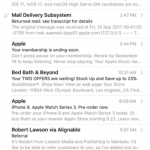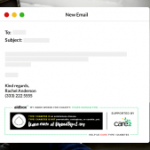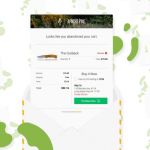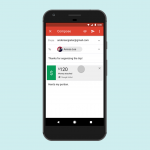4 Data-Backed Strategies For Writing Email Subject Lines That Get Opened
Even though many of us complain that our inboxes are too full, email is still one of the most popular ways to communicate. The average person sends and receives 123 emails each day, and that number is expected to grow over the next three years, according to the technology market-research firm Radicati.
With all of that volume, your best chance of being read rests in your subject line, says Anna Holschuh, a data engineer at the email platform provider Yesware. “We often make split-second decisions about dealing with email, and it’s easy to disregard a message based on a subject line,” she says.
Yesware’s data scientists analyzed 115 million emails for a full year to identify email subject-line strategies that work and those that don’t. “We looked specifically at most and least used words and formats in comparison to most and least effective,” says Holschuh.
With an average open rate of 51.9% and an average reply rate of 29.8%, Holschuh and her colleagues identified some important trends:
Avoid Questions
Got a quick question? Think twice before shooting off an email because it could reduce your chances of getting a reply. “Quick question” is a frequently used but poorly performing subject line, says Holschuh. When a question or question mark was used in the subject line, the open rate dropped from 51.9% to 41.6%. In addition, the reply rate dropped from 29.8% to 18.4%.
“Questions put people on the spot, and you’re asking a lot of an already busy, stressed-out professional,” says Holschuh. “You’re asking them to do work without providing value up front.”
“If the recipient is familiar with you or if you add context to your request on why it benefits the other person, it could be a different story,” she says. “But cold emails that put people on the spot don’t do well.” Instead of asking, “Are you the appropriate person?” for example, do your research up front and save the person’s time, says Holschuh.
Skip The Personal Greetings
Greetings in subject lines, such as “hi,” “hello,” and “howdy” seem conversational and familiar, but they tend to reduce the open rate, especially when you don’t know the sender, says Holschuh. When a greeting was used in the subject line, it dropped down to 48.1%. In addition, the reply rate dropped to 21.2%.
“The technique was used to dupe people into thinking that the sender was an old friend, and it was overused,” says Holschuh. “It could be that our brain now recognizes these subject lines as an early warning sign of a sales email, and we delete the emails to avoid that first time we expected a personal email and were wrong.”
Save personal content for the body of the email instead of putting it in the subject line, Holschuh advises.
Use Numbers
Questions and greetings don’t do well, but there are other things you can do to catch the recipient’s attention. Subject lines with hard numbers have a higher open and reply rate, according to Yesware. The open rate increased to 53.2% and the reply rate went to 32%.
“We believe it’s the case because in this age of data, people like numbers and hard facts,” says Holschuh. “Metrics also offer credibility, and we saw that including numbers boosts open and reply rates.”
And Use Title Case
An unexpected finding was the use of capitalization. When senders use title case—for example: Subject-Line Story versus subject-line story—emails had a higher open and reply rate. Title case had an open rate of 54.3%, while lower-case subject lines dropped to 47.6%. The reply rate with title case bumped up to 32.3%, while lower case fell to 25.7%.
“It provides a sense of authority of what you’re talking about versus an informal tone that’s implied with all lower-case letters,” says Holschuh.
Fast Company , Read Full Story
(32)













